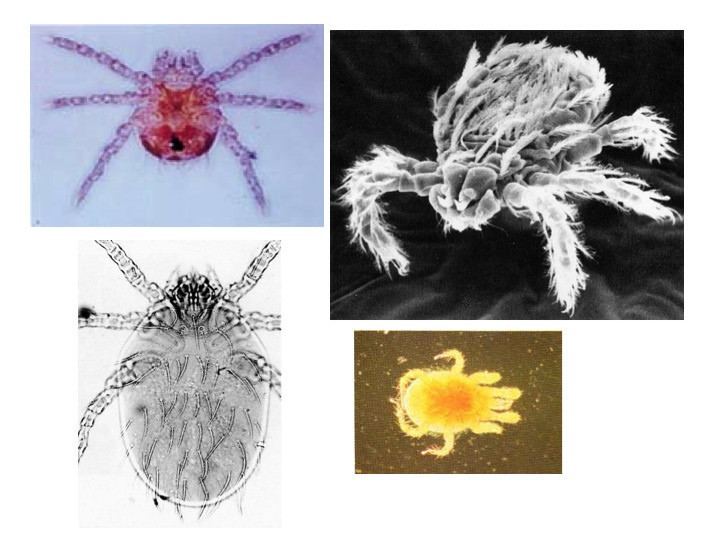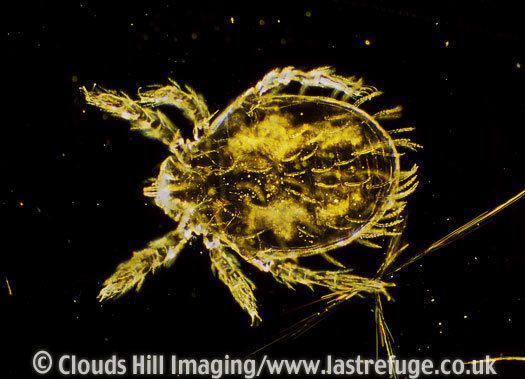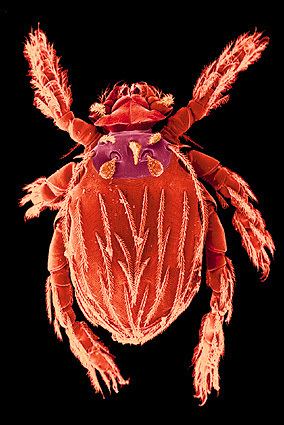Subfamily Trombiculinae Rank Genus Subclass Acari | Family Trombiculidae | |
 | ||
Similar Orientia, Berry bugs, Neotrombicula, Trombicula, Rickettsiaceae | ||
Leptotrombidium (/ˌlɛptoʊtrɒmˈbɪdiəm/) is a genus of mites in the family Trombiculidae, that are able to infect humans with scrub typhus (Orientia tsutsugamushi infection) through their bite. The larval form (called chiggers) feeds on rodents, but also occasionally humans and other large mammals. They are related to the harvest mites of the North America and Europe.
Contents
It was originally thought that rodents were the main reservoir for O. tsutsugamushi and that the mites were merely vectors of infection: that is, the mites only transferred the contagion from the rodents to humans. However, it is now known that the mites only feed once in their lifetime, which means that transmission from rodent to human via the mites is impossible (for it to have been possible, the mite would have to feed at least twice, once on the infected rodent and again on the human who would then be infected). Instead, the bacterium persists in the mites through transovarial transmission, where infected mites transmit the infection to their unborn offspring. Leptotrombidium mites are therefore both vector and reservoir for O. tsutsugamushi. The infection predominantly affects female mites, and does not appear to otherwise harm the mites.

Life history

The larva is pale orange in colour and feeds on liquified skin tissue, not blood, as their mouth parts (chelicerae) are too short to reach the blood vessels. They have 3 pairs of legs. The larvae most commonly target rodents, but will also attach to humans. For humans, the bite is painless, but pain commonly develops only after the larva detaches from the skin, leaving a red papule that may then develop into an eschar.
The larval stage lasts for 1 to 2 weeks. After feeding, the larvae drop to the ground and become nymphs. Nymph is brick-red in colour and has 4 pairs of legs. Nymphal stage lasts for 1 to 3 weeks. Nymphs mature into adults which have 4 pairs of legs, first pair being the largest. They are harmless to humans. In the post larval stage, they are not parasitic and feed on plant materials. Female lays eggs singly, which hatch in about a week. Lifespan of adult is about 6 months.
Taxonomy

